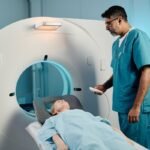Breathing is an essential process that, apparently, does not need to be learned: we all breathe from birth and we do not have to train ourselves to do it well.
But is this the case? No. According to the latest studies, it seems that there is some technique to be learned. Among other things, because breathing through the nose is not the same as breathing through the mouth.
Cilia, superheroes that protect us
On average, a person breathes around 10,000-12,000 liters of air in a single day. This air, however clean it may be, contains suspended particles such as dust, bacteria, viruses, or fungal spores that settle in the respiratory tract and on the alveolar surfaces of the lung.
But let’s not panic too soon: the respiratory system knows how to clean and defend itself. In reality, only extremely small particles with a diameter of less than 3-5 microns manage to reach the lungs. And how does the respiratory system manage to stop the rest? Thanks to superheroes called cilia.
Cilia are tiny hair-like projections that are much smaller than the tip of a pin. They are found in the thousands in the mucosa of the respiratory tract: each cell of the mucosa of the nose and bronchi has about 25-30 cilia, each 5-7 µm long.
Cilia protrude from the cells and move like the bristles of a brush when we sweep. Their function is to keep the nose clean of particles up to 0.5 mm in diameter that enter, dragging them towards the pharynx so that, in just 10 or 15 minutes, they are eliminated from the nose.
We could say that the superpower of these cellular heroes is their super speed: they shake more than a thousand times a minute and manage to displace the mucus that covers the trachea upwards so that pathogens and particles become trapped in this layer of mucus. From there they can be expelled when coughing, or dragged to the mouth – where there are no cilia – and swallowed. This makes them a crucial defense mechanism against infections of the nose, sinuses, and bronchi.
The nose and mouth are different at the immunological level
As we have just explained, the nose is covered with a tissue with very peculiar physical characteristics. Well, at the immunological level, the nose is also special because it is where the triage of pathogens that enter the air we breathe takes place.
The nasal mucosa is constantly deciding whether to attack a pathogen or let it be (because the damage caused by a pitched battle would be worse for our body). This implies that there is a certain tolerance towards pathogens that normally do not cause us great harm.
Part of this gatekeeper role is played by a type of B cell that produces antibodies called IgA, somewhat different from IgG, which predominates in the blood.
But why the nose and not the mouth? Because the mouth is, fundamentally, the entry point for food, both solid and liquid. That is why its mucosa has another type of specialization and lacks cilia that filter the air. Its function is to deal with pathogens that try to enter the food we eat. Therefore, just as we do not eat food through the nose, we should not breathe through the mouth either.
In addition, the air that enters through the nose stays warmer and drives away germs. That is why the scarf is such a good invention, covering the mouth and nose on cold days.























+ There are no comments
Add yours